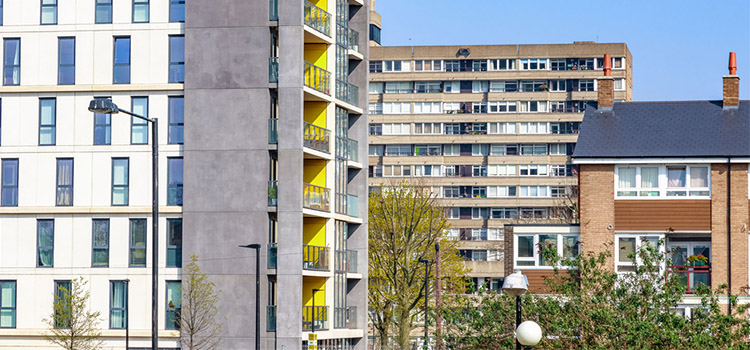
Concerns surrounding High Pressure Laminate (HPL) in cladding tests
Since the Grenfell Tower tragedy which claimed 72 lives, the government has provided funding to remove aluminium composite material (ACM) cladding from buildings – the same type used on Grenfell Tower. And now, tests are being carried out on other types of building materials and cladding.
According to research group Building Research Establishment, none of the cladding systems that had passed a standard BS 8414 safety test included a type of cladding called High Pressure Laminate (HPL).
Given that further research, published in the Journal of Hazardous Materials, has revealed that HPL cladding materials released heat 25 times faster and released 115 times more heat than non-combustible products, it’s an obvious concern.
Now, the government has said that it recognises concerns about HPL and has included them in the new fire safety tests.
Research suggests that ‘at least’ 160 high rises have been built with materials used in rainscreen cladding systems ‘that have not been accounted for’ in prior government testing. These include HPL panels made from compressed wood or paper fibre.
HPL is often used to produce colourful skins on new buildings however some are classed as combustible.
Since December, new fire safety regulations have banned combustible materials from the external walls of new buildings over 59 feet tall. With some campaigning for these regulations to be applied to all new buildings, regardless of height. Additionally, the government has recently issued new advice banning combustible materials on balconies.
At Lockmetal, we would recommend the use of either solid aluminium or mineral based boards instead. These are non-combustible cladding options.
Solid aluminium remains one of the safest forms of rainscreen cladding available to the industry today and when used in a system where fire rated mineral insulation is employed, presents no fire risk.
There are various types of mineral board cladding available. Rockpanel for example, is a sustainable board material which is mostly used in ventilated constructions; façade cladding, roof detailing, soffits and fascias. It’s a flexible and robust board which can be applied easily in any shape or form. Fibre cement panels are also non-combustible, achieving an A1 and A2 rating, being able to withstand intense heat.
It’s clear that cladding itself isn’t the problem – it’s the type that is used. Solid aluminium and mineral based cladding is what we recommend at Lockmetal in terms of fire safety.

